Vinca or "Periwinkle" as it is known by it's common name, is an annual plant which will grow fast and has a long flowering period. Annuals last only one growing season, but Vinca will re-seed itself, and new plants will grow again if the right conditions are met. Vincas come in many colours (mainly pastel colours), and can be grown from seedlings - available in most nurseries, or can be grown from seed. They can be useful for either full sun or part shade areas. Water and fertilise regularly for the best flower display. Be careful not to confuse Vinca with Impatiens, they are a different plant .These Vincas were photographed in a Sydney garden not far from the Harbour.
***** Comments should be no more than 200 words maximum and 5 pics/photos *****
***** 1 person = 1 comment - please do not use multiple accounts , thankyou*****
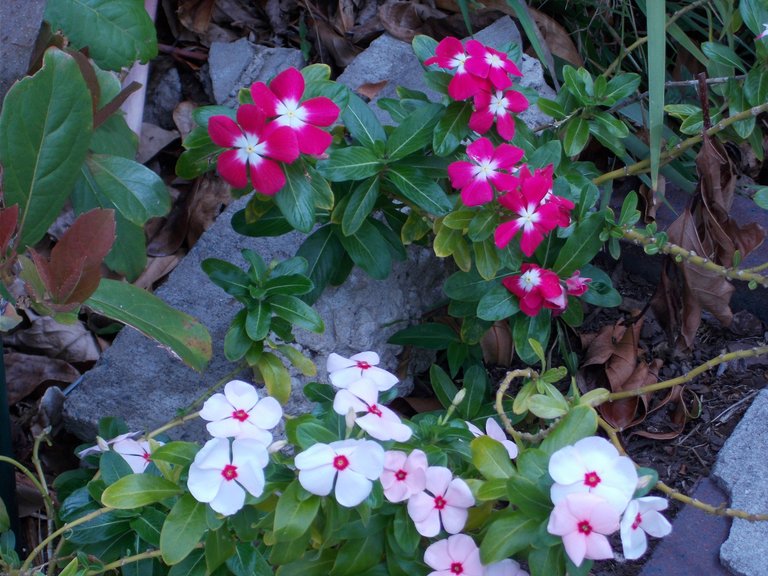
Vinca (Periwinkle)
The common periwinkle plant (Vinca minor) is often spotted creeping down steep hillsides and banks, offering a green and growing affect in areas which might otherwise be bare. The periwinkle plant is exceptional as an erosion control specimen. Periwinkle is also used as a spreading shrub in USDA garden zones 4 to 8. Periwinkle is often also called creeping vinca.
How to Grow Periwinkle Plants
This broadleaf evergreen plant grows easily and periwinkle care most often involves keeping the prolific spreader in check. Periwinkle, once established, is drought resistant and needs little other care if properly sited in the landscape. Periwinkle care after planting may include the removal of tall weeds in the area.
Once established, growing periwinkle will likely shade out future growth of weeds and eliminate this chore. The periwinkle plant grows best in a partially shaded area in acidic soil; however, it can thrive in a variety of sunlight and soil conditions. Growing periwinkle in partial shade creates more vigorous growth. In many instances, extreme vigor may not be desirable unless the periwinkle plant needs to cover a large area.
One small plant can spread to 8 feet across. Growing periwinkle as a ground cover is common as it rarely reaches more than 4 inches in height. Periwinkle is best used for controlling erosion as described above. Do not plant near other specimens in the flower bed or garden, as it may overtake and choke out valuable plantings. This plant may be used as a climber on a non-living support and is useful for blocking views when used in this way.
Before planting periwinkle, make sure it is what you want in the area, as it is difficult to remove once established. Periwinkle appears low on the exotic invasive list, but can escape cultivation in the garden. It is rarely found escaping into undisturbed woodlands. Now that you know how to grow periwinkle and manage its growth, you can make an informed decision before planting the specimen in your landscape. Periwinkle ground cover should not be confused with annual periwinkle, as annual periwinkle (Catharanthus roseus) is a different plant.
https://gateway.ipfs.io/ipfs/QmUhxJWqGnw8DxvnETdsxLgXftTSNhy7N2oDRZXvSUGuYU
Vinca minor is a perennial, evergreen vine. The stems are smooth, green, round, sometimes pubescent, and often hollow, although it does produce woody rhizomes. The plant forms thick sprawling mats with the flowering stems more or less erect. Its leaves are simple and arranged oppositely on the stem, though sometimes the nodes are so close together that two pairs of leaves seem to form a whorl.
The leaves are oblong-ovate to elliptical, approximately 2-5 cm long and 1-2.5cm wide, with petioles 1-3mm long. They are glossy, pinnately veined, entire, and have margins that curl away from the sun. The veins are usually white, and latex can be found in the stems and leaves.
The flower is perfect and without odor. It is showy, purple to blue and occasionally white, borne singly in an axillary position on a 1-1.5cm pedicel. The calyx is five-lobed, green, and glabrous. The petals radiate from the center in an almost pinwheel-like shape forming an 8-12mm long tube with a white crest that is finely pubescent near the base. The corolla is approximately 2.5 cm in diameter. The flower has five stamens; the anthers are yellow and their tips are finely pubescent. The superior green gynoecium is two-carpellate. The style is green; the stigma is densely pubescent and white.
Source: http://climbers.lsa.umich.edu/?p=170
Congrats, you are sharing the Fav. comment Award with one other. Your comment has been chosen because of the great pics and info. Well done !!
Vinca refers to several groups of plants suitable for a number of applications: Vinca minor (Common Periwinkle, Dwarf Periwinkle) and Vinca major (Big-leaf Periwinkle) both make lovely, evergreen groundcovers; Catharanthus roseus (Madagascar Periwinkle) is an upright, flowering annual perfect for beds and containers.
Known for their adaptability and low maintenance, they thrive in heat, humidity, drought, cold, and poor soil, flaunting blooms in shades of white, rose, pink, and red, and flowering from spring to fall, depending on the variety.
Genus name is from Latin meaning to bind or wind around in reference to the long, flexible stems that were used in wreath making. Specific epithet means smaller. The leaves of Vinca minor are smaller than those of Vinca major.
No serious insect problems but vince stem canker (blight) can damage or kill large patches. Can spread aggressively into adjacent lawns or garden areas. Versatile ground cover for shady areas. Good cover for bulbs. Effective on slopes or banks to stabilize soils and prevent erosion.
Source1|2
Congrats, you are sharing the Fav. comment Award with one other. Your comment has great pics and info, well done !!
Lesser periwinkle (Vinca minor) belongs to the dogbane family (Apocyanaceae). It is a perennial evergreen viny subshrub, 15-20 cm high. It is creeping but never twining or climbing. The plant has opposite, elliptic to lance-shaped, shiny dark green leaves that grow up to 5 cm long with a leathery texture.
The 2-3 cm sky-blue and funnel-shaped flowers are produced continuously from May to October. The flowers have two follicles (a dry unilocular fruit formed from one carpel), containing numerous seeds. There are numerous cultivars of periwinkle each with different flower colors (blue, white, pink, etc.) and variegated foliage.
Periwinkle is originally native to Central and Southern Europe, from Denmark to Spain and east to West Asia. Lesser periwinkle was introduced to North America in the 1700s for ornamental purposes.
The leaves or the whole above-ground parts of the lesser periwinkle are used in herbal medicine. Both the flowering and non-blooming shoots are harvested and dried as quickly as possible at a temperature up to 45 ° C.
The dried plant material can be used for extracts, liquid extracts, powder, and tinctures. Periwinkle was already referred to as medicinal plant at the time of Pedanius Dioscorides (1st century AD), who recommended the use of the herb for a toothache and poisonous insect stings and animal bites.
Source
Congrats, you have won the Silly Sausage Award for your comment. Great pics and info.
Vinca is an evergreen subshrub or herbaceous plant commonly known as the Madagascar periwinkle or Rosy Periwinkle. It is a species of Catharanthus native and endemic to Madagascar.
Scientific Name: Catharanthus roseus (the word Catharanthus derives from the Greek language meaning “pure flower”)
Common Name: Vinca, Madagascar periwinkle, Rosy Periwinkle, Cape Periwinkle, Rose Periwinkle, and “Old-Maid”. In India the plant is known as sadaphuli meaning “always flowering”.
Medicinal Uses:
Vinca has long been cultivated for herbal medicine. In Ayurveda (Indian traditional medicine) the extracts of its roots and shoots, though poisonous, is used against several diseases. In traditional Chinese medicine, extracts from it have been used against numerous diseases, including diabetes, malaria, and Hodgkin’s lymphoma.
Vinca is noted for its long flowering period, throughout the year in tropical conditions, and from spring to late autumn, in warm temperate climates. Flowers come in a wide variety of colors such as red, dark red, white, pink, light pink, and purple.
Excellent selection of plants always! I have seen these plants thrive amazingly in Karachi, Pakistan. The flowers can be seen most of the year.
Abundant blooms and ease of care make vinca (Catharanthus roseus) an excellent selection if you have little time to tend your garden.
Useful in borders, flowerbeds, rock gardens and containers, the vinca flower provides instant color wherever it grows. The round, flat blooms appear on top of 12- to 15-inch stems.
These drought-tolerant bedding plants thrive in any soil type as long as it is fast draining and not overly fertile. Hardy in U.S. Department of Agriculture plant hardiness zones 9b through 11, vincas thrive in full sun and require temperatures no colder than 60 degrees Fahrenheit.
Although vincas are known as summer-flowering annuals, they are actually biennials and will flower for you all through autumn into winter. Prune back by 50 per cent at the beginning of spring, liquid fertilise and they will start flowering again at the end of spring.
The cascading varieties of the Cora Cascade vinca include Polka Dot, with a profusion of soft pink single flowers with a red centre. Other colours include lilac, magenta, cherry and strawberry.
They are also available as deep red, purple/black and pure white-flowering plants.
source
Thank you @ctrl-alt-nwo for creating such a wonderful platform.
@ctrl-+slt-nwo, That's real beautiful flower indeed plant. I see this flowers and plants. Very well explain here by you. It's remarkable to steemians who interesting to gardening. I add some details via founder internet.
The clear crisp flowers and glossy green leaves of annual vinca are so perfect you may be tempted to rub them to see if they are real. Annual vinca, occasionally called periwinkle, is not related to the perennial ground cover with the same common name. In fact, annual vinca is native to Madagascar and is prized for its nonstop flower show from early summer till fall. Annual vinca is drought tolerant and requires almost no maintenance to keep it looking terrific. Use it en masse in beds and borders or tuck it into mixed containers with other annual flowers. Annual vinca grows 12 to 18 inches tall and comes in pink, purple, red, white, magenta, and bi-colors. The flowers are also attractive to butterflies. Hardy in zone 10.
Annual vinca doesn't require deadheading, or the removal of faded flowers, to continue blooming, making it a wonderfully low-maintenance annual flower for sun. Some older types of vinca can self seed in the garden, especially in subtropical areas. It can be invasive in certain areas; check local restrictions before planting it.
Images source: google
Contents source: http://www.costafarms.com/plants/vinca-annual
Vinca minor, also known as Common Periwinkle, a plant species originally native to parts of central and southern Europe. Commonly used and referred to as a 'groundcover,' Vinca minor is often used to cover bare places of ground and is dense in its nature of growth. It has a habit that often chokes out competing plants and weeds, Periwinkle is excellent in preventing soil erosion. Vinca minor tends to bloom throughout the spring and summer months.
Source
The periwinkles in the genus Vinca open their first flowers quite early, when crocuses are in full bloom and as daffodils start to flower. Periwinkle flowers are a lovely shade of blue-purple, pink, red or white, which is well enough known to appear in poetry and clothing catalogs as a color name
Source
Source
Periwinkles are evergreen in most of Europe so are available all year for chaplets. The blue color made periwinkles flowers of heaven and symbols of Jesus, Mary and the angels in Heaven, so in medieval Europe one might carry or wear periwinkles as a reminder of Heaven and its grace.
Source
Source
Periwinkles (the plants) have a rich history in Europe, having been used medicinally since at least Roman times. Dioscorides (64 AD) wrote that the leaves and stalks drunk in wine stop dysentery and chewed, the leaves cure the pains of the teeth. That's just a bit of the folklore of periwinkles.
text from multiple Google sources
They are indeed more beautiful in real life ;)
I have seen them up close and they sure are a beauty ,I have images in my stock of them as well.
This is very beautiful garden and beautiful photography.
Have a great day. thanks @ctrl-alt-nwo
Vinca an herbal remedy with a rich history in folk medicine,Vinca is the common name for a pair of perennial flowering shrubs belonging to the dogbane (Apocynaceae) family. The herb has been used for centuries to treat a variety of ailments and was a favorite ingredient of magical charms in the Middle Ages.
While not approved by the Food and Drug Administration (FDA),Vinca has been reported to have a number of beneficial effects. Unfortunately, there is scarcely any scientific evidence to support these claims. Both forms of the herb have been used as an astringent for centuries and may be useful in alleviating excessive bleeding during menstruation , according to some herbalists.
Vinca is not known to be harmful when taken in recommended dosages, though it is important to remember that the long-term effects of taking the herb (in any amount) have not been investigated. Periwinkle should not be used by people with low blood pressure or constipation .
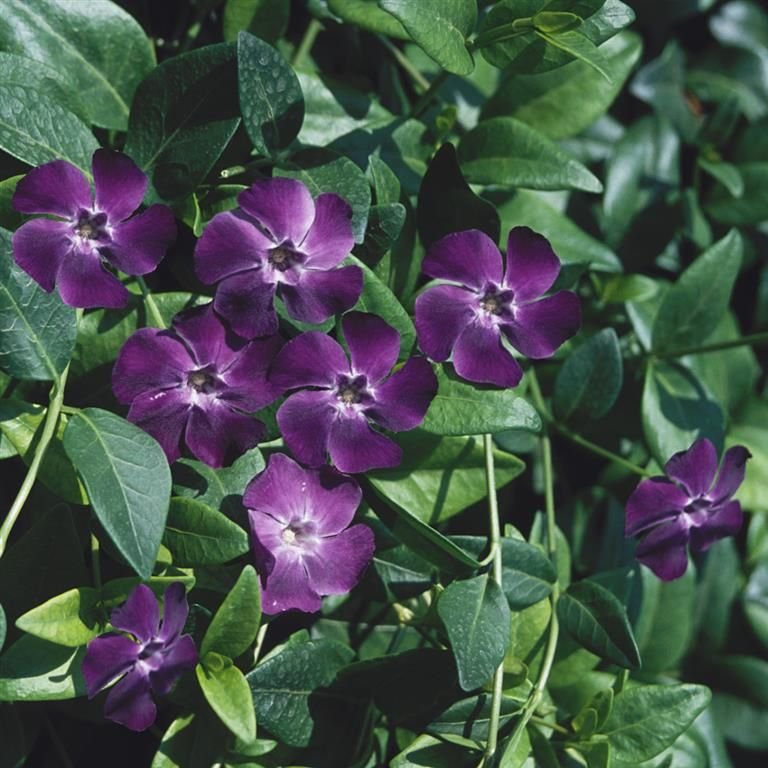
Taking too much Vinca can cause a potentially dangerous drop in blood pressure (symptoms include dizziness and fainting). In case of overdose, seek emergency care. Vinca may cause flushing and gastrointestinal problems.
The Vinca, or Madagascar periwinkle, is an annual flower that flowers constantly and stands up well to heat and humidity.
Description: Vinca flowers are divided but round, one to two inches in diameter, and borne at the tips of branches or shoots that bear glossy green leaves. The flowers of many varieties also have a contrasting eye in the center of the bloom. Colors include white, red, pink, and lavender flowers.
How to grow: Vinca is at its best in hot conditions- full sun, heat, and high humidity. Set out plants at 8 to 12 inches apart, after the soil has warmed.
Propagation: Sow seeds 12 weeks prior to setting out after last frost. Germination takes 14 to 21 days at a temperature above 70 degrees Fahrenheit. Maintain warm temperatures after germination and don't overwater.
Uses: Vinca is good for massing and edging and exceptional as a container plant. It is extremely heat tolerant. Thank you @ctrl-alt-nwo
https://home.howstuffworks.com/define-vinca-madagascar-periwinkle.htm
Vinca or Periwinkle is a prolific heat and drought tolerant annual, perfect for hot, dry areas. It's easy to grow, and requires little or no attention. A grower once reported that he has grown Vinca in the same location for 30 years. It successfully reseeded itself each year, with no effort on his part.
This plant is known by three names: Vinca, Periwinkle (or Madagascar Periwinkle), and Myrtle. Botanists will tell you that there is also a separate strain or variety of Periwinkle. Vinca plants are native to North America, Europe, China and India.
The plants are grown for its attractive glossy, green foliage, as well as its flowers. Flowers bloom all summer, and up to frost. Common colors include white, rose, pink, and red. Vinca is commonly used for borders, edging, and ground cover or bedding plants. Plants grow 1-2 feet tall.
Over the years, Vinca has been used for medicinal purposes. Applications included: Lowering blood pressure, Lowering sugar levels for diabetics, Treatment for coughs, colds, sore throats & Treating eye and lung infections.
Vinca are seldom bothered by insects and disease. Fungus problems can occur in humid or wet weather. If insect or disease problems occur, treat early with organic or chemical insect repellents and fungicide.
#source:http://www.gardenersnet.com/flower/vincaperiwinkle.htm
Imagine that you are a plant breeder searching the globe for the unique, the undiscovered, the potentially revolutionary plant….and then, you find it! Over the years, research teams worked tirelessly on perfecting the genetics to create a vinca both beautiful and disease-resistant and, finally, Cora® was born!
Photo Source
In the garden, Cora® vinca will produce huge, show-stopping flowers on glossy green foliage and these blooms will last and last. And, because Cora is a real heat-lover, it will be spectacular throughout the summer when many other annuals experience a reduction in flower size and quantity.
Picture Source
And now there is a trailing version Cora Cascade that gives the same great heat-loving, disease-resistant performance in a form that is perfect for hanging baskets. With both Cora and Cora Cascade, landscapers and gardeners can now look forward to a vinca that will thrive with strength and beauty all season long.
Photo Source
There is another side to vinca (or periwinkle) that is quite interesting and that is its potential healing properties. It is an important plant taxonomically and herbalists have been using some of the elements of this interesting species over the years for conditions as varied as headaches to diabetic wound healing. As well as Periwinkle tea is used to treat diabetes and cough.
Photo Source
Text Source
Vinca flower in very smart and common flower in my country....Sri Lanka...
Actualy we can easy grow vinca in our garden...and it is very beautiful...
This is my vinca flowers...and my original photography...
Cheers~~~
Beautiful flowers are, my friend and the clear crisp flowers and glossy green leaves of annual vinca are so perfect you may be tempted to rub them to see if they are real. Annual vinca, occasionally called periwinkle, is not related to the perennial ground cover with the same common name. In fact, annual vinca is native to Madagascar and is prized for its nonstop flower show from early summer till fall. Annual vinca is drought tolerant and requires almost no maintenance to keep it looking terrific. Use it en masse in beds and borders or tuck it into mixed containers with other annual flowers. Annual vinca grows 12 to 18 inches tall and comes in pink, purple, red, white, magenta, and bi-colors. The flowers are also attractive to butterflies. Hardy in zone 10.
Plant annual vinca in a sunny location with well-drained soil. If you are growing annual vinca in containers use a commercial potting mix. Don't pot vinca in regular garden soil because it doesn't drain well and can cause rot issues. Annual vinca is drought tolerant but does best if you water the plants whenever the top inch or so of the soil feels dry to the touch. Take care not to overwater this plant; it's easily susceptible to root rot.
Keep potted vinca blooming well by fertilizing regularly with any general-purpose garden fertilizer. Be sure to follow the directions on the product packaging. If you have good or average soil, you typically don't need to fertilize vinca growing in gardens and landscapes.
Annual vinca doesn't require deadheading, or the removal of faded flowers, to continue blooming, making it a wonderfully low-maintenance annual flower for sun. Some older types of vinca can self seed in the garden, especially in subtropical areas. It can be invasive in certain areas; check local restrictions before planting it. Annual vinca is not recommended for human or animal consumption. Thank you @ctrl-alt-nwo
http://www.costafarms.com/plants/vinca-annual
Common periwinkle (Vinca minor) is a small evergreen plant with showy white or purple flowers. This invasive plant is capable of forming dense mats which supress native plant species found on the forest floor.
Currently only located in the Lower Mainland of BC, common periwinkle can be found high soil moisture locations such as forested areas or water courses.
Common periwinkle is an evergreen vine-like plant with glossy dark green leaves; they have white or purple five pedalled flowers that are roughly 10cm in diameter.
Due its rapid growing capability and its ability to withstand poor growing conditions, common periwinkle continues to spread through BC. In order to prevent further spread of this species please be ‘PlantWise’ when selecting ornamental plants for gardens. Use alternative non-invasive species in place.
https://bcinvasives.ca/invasive-species/identify/invasive-plants/common-periwinkle/
magoo-2 found a series of multi accounts of a same owner is following your articles to cheat your generous rewards.
magoo-2 found these accounts are suspicious & can be multi accounts of a single owner. Conclusion is based on last 30 days transactions:
@rik432 @ratul8940 @rahul72 @taylor10 @villani @wilson6 @masud90 @purepinag @sumonsha @perry1 @max1994
magoo-2
Check our latest multi comment spam update report
Plant Vinca rosea in a well-draining spot with the poorest soil on your property. This plant does not grow well in fertile conditions. Transplant outdoors after all danger of frost has passed for your area and the soil warms up to at least 65 degrees Fahrenheit.
Locate Vinca roseas in full sun or partial shade. These plants love full sun, but appreciate a sunny spot that is partially shady during the hottest hours of the afternoon.
Apply 2 to 4 inches of mulch such as bark chips to the planting site. This helps retain soil moisture and discourages weed development.
Water newly planted Vinca rosea thoroughly to evenly moisten the soil but not enough to make it soggy or wet throughout the first growing season. Allow the soil surface to become dry to your touch before watering again. Once established, these drought-tolerant plants can survive on the available rainfall. Vinca rosea does not tolerate standing in water.
Feed Vinca rosea an all-purpose liquid or granular fertilizer for blooming plants once monthly throughout the growing season. Consult the packaging instructions for quantities.
Vinca (Catharanthus roseus) is an annual bedding plant which originated from Madagascar. It is a tough plant to grow because it requires higher air (up to 85˚F) and substrate (not less than 70˚F) temperatures than other plants, a low fertility, high porosity substrate, high relative humidity and high light. Gardeners choose Vinca because it is relatively drought-tolerant and performs well in dry and hot locations exposed to full sun. Another important benefit of this plant is that it flowers during the entire summer. Vinca flowers come in a wide variety of colors such as red, dark red, white, pink, light pink, and purple.
In general, there are three types of Vincas: creeping (spreads 8-10 inches), dwarf (10-14 inches tall) and a border type (bigger flowers and 14-20 inches tall). In this article, the focus will be on the latter two types in which there are several series, which include: Jams N’ Jellies, Titan, Pacifica XP, Mediterranean, Cooler, Heat Wave, Blue Pearl, Tropicana, Passion, Cora, and others.
https://www.pthorticulture.com/en/training-center/growing-tough-crops-vinca-catharanthus-roseus/
Fantastic groundcover for either damp or dry shade. Vinca minor will root at the leaf nodes so is very useful for tricky situations particularly sloping sites. They are great for underplanting and their trailing habit can be used to great effect in container planting. Consider underplanting Vinca with snowdrops or dwarf narcissi. A variety of pretty colours are available including the ever elegant, white 'Gertrude Jekyll'
A lovely low growing, compact white flowered form. Short evergreen leaved stems produce a succession of refreshing white flowers from mid Spring and into the Summer. Bushy plants.
Vinca minor, including this form, is very tolerant of a wide range of conditions but thrives in dryish deciduous shade. On the whole very easy.
http://www.plantsforshade.co.uk/acatalog/Vinca.html
Vincas don't like cold weather, so wait to plant yours until on or after May 1. It's tempting to rush these charmers into the ground, so you can enjoy them, but one cold night is all it takes to damage the plants. When you do plant them, choose a location where they can enjoy full sun to part shade. Vincas are fans of acidic soil, and their ideal soil pH level is around 5.5. Vincas survive droughts well but don't like wet soil, so give them a home in loamy or sandy soil that drains well. Space your plants 10 to 12 inches apart to promote airflow and minimize the risk of fungus. Mulch the plants lightly if desired.
If you want a pop of color that lasts from spring all the way to the fall, annual vinca (Catharanthus roseus) is the plant for you. Another name for vinca is periwinkle, but don't let the name fool you. These vibrant flowers come in red, apricot, purple, pink and other hues. Some varieties even produce flowers with one color petal and a different color center for a two-toned effect. Do be careful, however, if you live in a warm climate. While vinca grows as an annual in most of the United States, it's a perennial in the plant hardiness zones 10 and 11. When growing in this region, confine your vinca to a pot or plant it in an area where you won't mind it coming back. Vincas tolerate dry conditions and are resistant to deer and bunnies, so you won't have to worry about the local wildlife munching on your garden plants.
Source: https://www.hunker.com/13404331/when-to-plant-vinca
Vinca very popular plant @ctrl-alt-nwo
The vinca alkaloids include at least 86 alkaloids extracted from plants in the Vinca genus. The chemotherapy agent vincristine is extracted from Vinca rosea (current name Catharanthus roseus), and is used to treat some leukemias, lymphomas, and childhood cancers, as well as several other types of cancer and some non-cancerous conditions. Vinblastine is a chemical analogue of vincristine and is also used to treat various forms of cancer.Dimeric alkaloids such as vincristine and vinblastine are produced by the coupling the smaller indole alkaloids vindoline and catharanthine. In addition, the nootropic agent vincamine is derived from Vinca minor. Vinorelbine, a newer semi-synthetic chemotherapeutic agent, is used in the treatment of non-small-cell lung cancer and is prepared either from vinca natural products leurosine or catharanthine and vindoline,in both cases by first preparing anhydrovinblastine.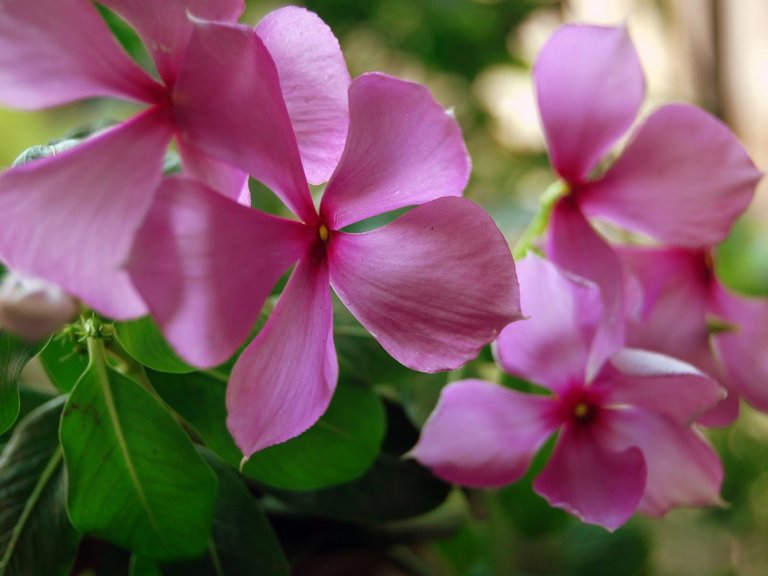
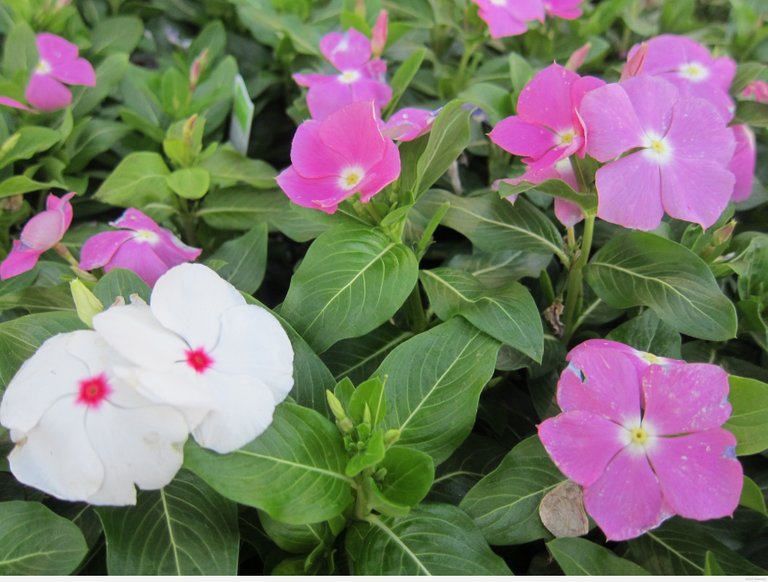
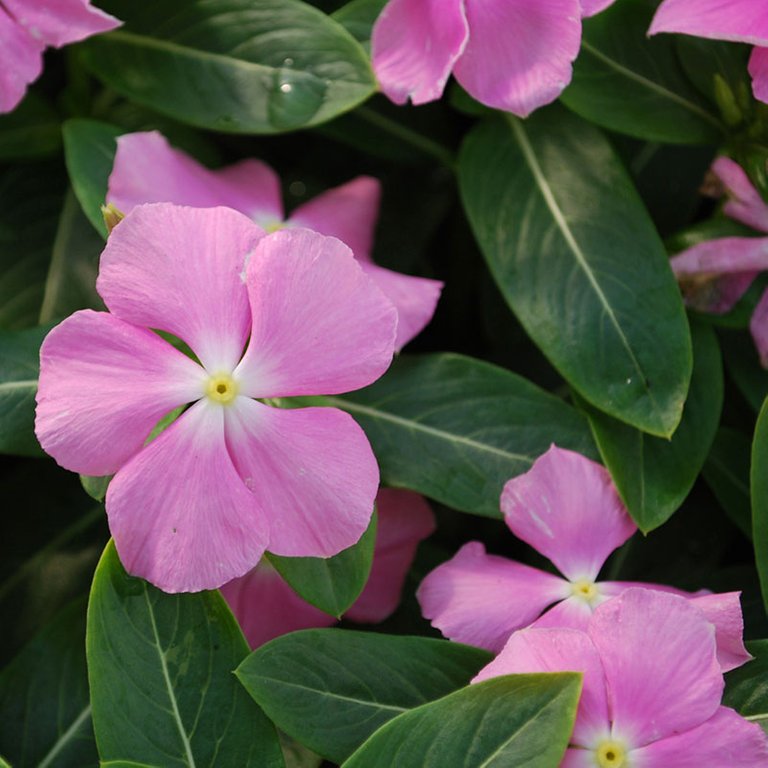
Vinca is a classic, old-school plant that’s earned its place in our gardens. While most vinca varieties are easy to grow, it's important to choose the best for your space because there are annual and perennial types.
The first thing to know about vinca is that there are actually two different categories of plants that commonly go by this name – annual (tropical) and perennial (hardy) vinca.
If you’re looking for big, bold color for sunny spots, the annual vinca varieties are probably for you. These plants typically have pinwheel-shaped flowers in festive shades of lavender, pink, red, and white. Most annual vinca varieties are good for attracting bees, butterflies, hummingbirds, and other pollinators. And they’re also typically deer and rabbit resistant.
Perennial vincas are typically low-growing groundcovers that thrive in shaded or partly shaded spots. There are two main species grown: Vinca major and V. minor. Perennial vinca varieties have pinwheel-shaped springtime flowers in shades of lavender, purple, and white. Perennial vincas are particularly well suited for woodland gardens, planting along slopes, and as a turf alternative.
Note: Vinca minor is considered invasive in some areas; check for local restrictions before planting it.
Greater periwinkles are also known as ‘big leaf periwinkles’, ‘large periwinkles’, ‘blue periwinkles’ and ‘blue buttons’
Greater periwinkles grow up to 50-70 cm (1.6 – 2 .3 feet) in height and spread 2-5 metres (6.6 – 16.4 feet) wide.
The flowers of greater periwinkles can be white or blue in colour but are typically coloured in purple shades and are 3-5 cm(1.2 – 2 inches) in diameter.
Greater periwinkles are an invasive weed in parts of Australia, New Zealand and United States, due to the ease of propagation from waste plant material.
The stems of greater periwinkles can be used for basket weaving and the plant is also used medicinally, although it is poisonous if large portions are consumed.
Greater periwinkles are happy to grow in shady areas and send down roots from their runners, making them easy to grow from cuttings.
All the information i collected for you @ctrl-alt-nwo sir. Info-http://tenrandomfacts.com/greater-periwinkle/
Vinca Flower (Plant) which is also known as the Periwinkle is a plant that is a prolific drought and heat tolerant, it is perfect for the hot and dry areas. It is native to the northwest of Africa, Europe and the southwest Asia. In India Vinca Flower (Plant) is commonly known as sadaphuli which means "always flowering".
Vinca plants produce flowers all through the year, the flowers are salverform with violet petals that are joined together at its base to eventually form a tube.
Vinca Flower (Plant) has been used for a long time for medicinal purposes. The application includes the treatment of High blood pressure, diabetes, sore throats, coughs and colds, it has also been used in treatment of lung and eye infections.
Vinca Flower (Plant) as a species are rarely bothered by diseases or insects, though the fungus problems might occur occasionally during the wet or humid weather. In-case the disease or insect problem occur you can treat with fungicide and insect repellents.
Periwinkles are fast growing, evergreen ground cover plants with opposing pairs of glossy dark green or variegated, oblong to lance shaped, 1½"-3" leaves. They produce an abundance of single, 1"-2" funnel shaped flowers with five flared and flattened petals, beginning in mid-spring and continuing throughout the summer. In some areas Periwinkles may become invasive.
Big Periwinkles can be grown in full sun, with plenty of water if your main concern is having lots of flowers, but is better grown as a ground cover in partial shade. Dwarf Periwinkle should only be grown in partial or full shade with a little morning sun. Perennial Vincas thrive in almost any soil, as long as it is well-drained.
For the best results however, compost or other organic material should be mixed into the soil at planting time. Periwinkles are fairly drought tolerant once they are established but grow and bloom best with regular watering. Vincas should be fed every two months while they are actively growing, using a good all-purpose fertilizer applied according to label directions. Shear Periwinkle plants back hard in the spring to promote fresh, new growth and to control spread.
Source: here
Vinca, periwinkle , an evergreen twining shrub. It springs up in woodland in the temperate countries of Europe. It grows several slender, prostrate shoots from its base, which trail along the ground and spread extensively.
The leaves are small, oblong, and raised beneath by a bony midrib: they are shiny and the leaf margins are entire: they are of a pleasant but darkish green. The blue, rose-shaped flowers appear in spring. The cylindric, furrowed seeds are enclosed in coupled pods.
This shrub is quite widespread in several countries: it thrives in rich, damp soil and in the shade of trees. It propagates readily from cuttings and prostrate shoots which root as soon as they touch the soil. Its rapid growth and propagation soon cause it to invade a piece of land if it is left untended.
Periwinkles are of ornamental interest: when left to their own devices, they form carpets of greenery which are covered with flowers in March and April. One may make small hedgerows from them by supporting them with trellis-work, or leave them to twine round the stems of large trees in order to cover the trees with verdure.
source
Vinca plants are subshrubs or herbaceous, and have slender trailing stems 1–2 m (3.3–6.6 ft) long but not growing more than 20–70 cm (8–27.5 in) above ground; the stems frequently take root where they touch the ground, enabling the plant to spread widely. The leaves are opposite, simple broad lanceolate to ovate, 1–9 cm (0.5–3.5 in) long and 0.5–6 cm (0.20–2.36 in) broad; they are evergreen in four species, but deciduous in the herbaceous V. herbacea, which dies back to the root system in winter.
The flowers, produced through most of the year, are salverform (like those of Phlox), simple, 2.5–7 cm (0.98–2.76 in) broad, with five usually violet (occasionally white) petals joined together at the base to form a tube. The fruit consists of a pair of divergent follicles; a dry fruit which is dehiscent along one rupture site in order to release seeds.
https://fthmb.tqn.com/qZUO5mQSogfh7UavLvnMnvQQaew=/960x0/filters:no_upscale():max_bytes(150000):strip_icc():format(webp)/Vinca-minor-blooming-big-577d479d3df78cb62c7c6336.jpg
Source
If we need to give some botanical information about the Periwinkle, which is an adjective to beautiful women's eyes, deadly beauty, and you will soon understand why we say that, we can call it the common name of the ground-covering garden plant species that make up the Vinca genus from the Apocynaceae family.
Reveal spoiler
Let's come to the curiously anticipated story. You can say why such a fascinating flower can be remembered with death. According to the legend, formerly the Periwinkle was hanged on the neck of the execution prisoners. For this reason, it has been associated with executions. Of course, it is not known how true it is.
Another legend is that the Italians put this flower in their baby graves. This flower, also known as the death flower for this reason, is the favorite expression of many lyricists and poets to describe the deadly looks. It is used to express lethal beauty.
Another story told is related to a woman whom Kara Davut will execute. For the first time a woman convicted of a prisoner's death is brought to the narrow streets in the morning, not yet in this incident. And then he looks at the eyes of Kara Davut and cries, saying that I am innocent. Kara Davut finds these eyes very familiar and at the same time very impressive.
The last word is "The woman who hangs me, Dad, I am innocent" hangs and this time her blue eyes look much more scary.
For the first time ever, Kara Davut, who has never been married, calls one "father" and this event never comes to mind. Then suddenly the individual falls into the head. Kara Davut, a wife and friend who is not a friend in life, goes to the day-to-day park and feeds the kennel, sits in a broken cove around a blue flowering crawl around, watching around. That woman's eyes were the same as the flowers of the fringe. These flowers are Periwinkle hometown.
After this remembrance, Kara Davut takes one of those blue flowers with his roots and sets it on the woman's grave. Here is the iconic eyes of Periwinkle since then.
Magoo-2 found a series of multi accounts of a same owner is following your articles to cheat your generous rewards.
Magoo-2 found these accounts are suspicious & can be multi accounts of a single owner. Conclusion is based on last 30 days transactions:
@justdothat @harunbaki @justshowme @gifhy @lessismoring
magoo-2
Check our latest multi comment spam update report
This is great article and wonderful photography.
Upvote Resteem @ctrl-alt-nwo
Actually I have multiple vinca's in my home garden...
Ur right sir....vinca flowers have very fast growth...it can easy grow and long flowering period...
This is my one of vinca flowers...
Actually I'm really like vinca flowers....vinca have multiple color collection...
This is my vinca flowers...I'm took this photos today morning...in my garden...usemy smart phone...actually my hobby is garderning...
Wel done and perfect work sir...
All the best...
The periwinkle (Vinca) or the violet of sorcerers :
The periwinkle is a plant widely used as a ground cover, thanks to its persistent foliage and its flowers rich in color. It adapts perfectly to the shade, but without regular size can become invasive. Counting different species, Periwinkle Vinca is recognizable by its flat flowers with five petals, sometimes violet, white, pale pink, or purple.
The light green leaves are small and smooth and the stems are around 15 to 30 centimeters depending on the variety. In addition to its decorative qualities, be careful because all parts of the plant are toxic and likely to cause vomiting if swallowed.
Periwinke is a beautiful flower locally known as Vinca. It's coloured are purple, blue, white and many more.
source
The flowers found in Australia, Newzealand, France, Canada, Netherlands, United States and some others country. It has a lot of medical uses like anti cancer such as childhood cancer in non-cancerous conditions, non-small-cell lung cancer, Hodkin's disease, malignant lymphomas, wilm tumor, improve blood flow and control high blood pressure.
source
source
Flowers is only thing in the world thats harm none. We can learn a lot from flowers as purify, love, greatness and happiness. Thank you sir @ctrl-alt-nwo for always sharing beautiful flowers as we love flowers and make the world more beautiful.
The common periwinkle plant (Vinca minor) is often spotted creeping down steep hillsides and banks, offering a green and growing affect in areas which might otherwise be bare. The periwinkle plant is exceptional as an erosion control specimen. Periwinkle is also used as a spreading shrub in USDA garden zones 4 to 8. Periwinkle is often also called creeping vinca. Periwinkle is most often grown as a ground cover.
The periwinkle plant takes its common name from the attractive blooms that dot the foliage in April to May, appearing in the color of periwinkle blue. More than 30 varieties of this plant exist, some with variegated foliage and other colors of blooms. When planting periwinkle, choose what best suits your landscape.
The periwinkle plant grows best in a partially shaded area in acidic soil; however, it can thrive in a variety of sunlight and soil conditions. Growing periwinkle in partial shade creates more vigorous growth. In many instances, extreme vigor may not be desirable unless the periwinkle plant needs to cover a large area. One small plant can spread to 8 feet across.
Before planting periwinkle, make sure it is what you want in the area, as it is difficult to remove once established. Periwinkle appears low on the exotic invasive list, but can escape cultivation in the garden. It is rarely found escaping into undisturbed woodlands.
SOURCE
Vinca Flower



Vinca Flower or better known as Tapak dara is an annual shrub originating from Madagascar Central America, but has spread to other tropical regions.
In Indonesia the python grows as an ornamental plant and herbal medicine. Flowers and leaves can be used as a remedy for leukemia and Hodgkin's disease (lymph node cancer).
The Vinca flower plant produces flowers with crowned crowned crowns and widened edges, having multiple colors depending on the cultivars.
Among them are white, blue, pink or purple.
The flowers look in contrast to the round leaves and dark green.
Grows flowers at the age of 12-30 days and start flowering at age 55-66 days after planting.
Plant height ranges from 20 - 100 cm. The flowers lasted all day.
It grows well from the lowlands to a height of 800 meters above sea level.
Should be planted in the garden as a landscape plant or in pots with a diameter of 20-25 cm.
The distance between plants is also about 20 - 25 cm
The names vinca and periwinkle apply both to an evergreen ground cover and to an annual flower, so it's important to know the differences between the two plants if you want success in your garden. Vinca minor, also known as common periwinkle or creeping myrtle, is the ground cover plant often used where grass won't grow. Vinca roseus, the Madagascar or Rose periwinkle, is the annual plant used in sunny flower beds and containers. Both plants are commonly found in garden centers in the spring and summer, but they are used in the garden completely differently.
Growing Annual Periwinkle
Annual periwinkles love the sun and tolerate only very light shade before flowering is affected. Use them for bedding in flower beds, in outdoor containers, or as houseplants for sunny windows. When bedding out, space them 8 to 10 inches apart. They are not particular about soil, and in fact do well in poor soil with low fertilization. Watering is necessary only if plants start to droop. When used in containers, they do best in terra cotta pots which allow for good drainage and air flow; be especially careful not to overwater if grown in plastic pots. They are pest-free if not overwatered. The plants are self-cleaning, so you do not have to dead-head spent flowers, but plants can be pinched back to encourage bushiness if they get too large. They are completely intolerant of frost, so if you want to bring them in for the winter, be sure to move the plants indoors when night temperatures drop down to about 50 degrees. Plants can be propagated by stem cuttings at any time, or you can start from seed three to four months before the last frost date for your area. Periwinkles are easily found in garden centers in late spring.
Annual vinca commonly grows 8 to 12 inches tall, but some varieties can reach a height of 18 inches. Plant spread is typically 12 to 18 inches. Annual vinca produces 1- to 2-inch-diameter flowers above glossy, dark green foliage. Until recent years, the range of flower colors was somewhat limited. Flowers varied from pink to white, often with dark rose or red eyes. Over the past few years, seed companies have developed a large number of new varieties. These new varieties have expanded the color range of annual vinca. Gardeners can select varieties with light blue, pink, salmon, apricot, orchid, raspberry, carmine, and burgundy flowers. Plant breeders have also introduced varieties with trailing and dwarf, upright growth habits.
Annual vinca is easy to grow. It performs best in well-drained soils in sites that receive partial to full sun. Annual vinca possesses excellent heat and drought tolerance, blooming continuously through the intense heat of mid-summer. However, Madagascar periwinkle does not perform well in wet, poorly drained soils or in cool spring weather. Plants turn a sickly yellow green in wet soils or cool spring weather. When choosing a planting site, make sure it has well-drained soil. Also, allow the temperatures to warm nicely before planting in the spring. Annual vinca is free of serious insect and disease pests.
Annual vinca is a low maintenance, relatively trouble-free bedding plant. It blooms from spring until a killing frost in the fall. The removal of faded flowers or deadheading is not necessary. While root and stem rots may occur, these problems can usually be avoided by planting in warm, well-drained soils.
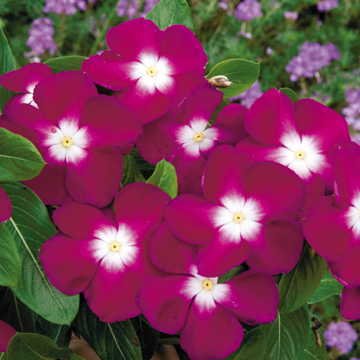
Sadabahar, Vinca or periwinkle is a very commonly grown plant in India. It is native to Madagascar. There are 2 varieties that are grown for its medicinal value - the pink and the white colored flower varieties.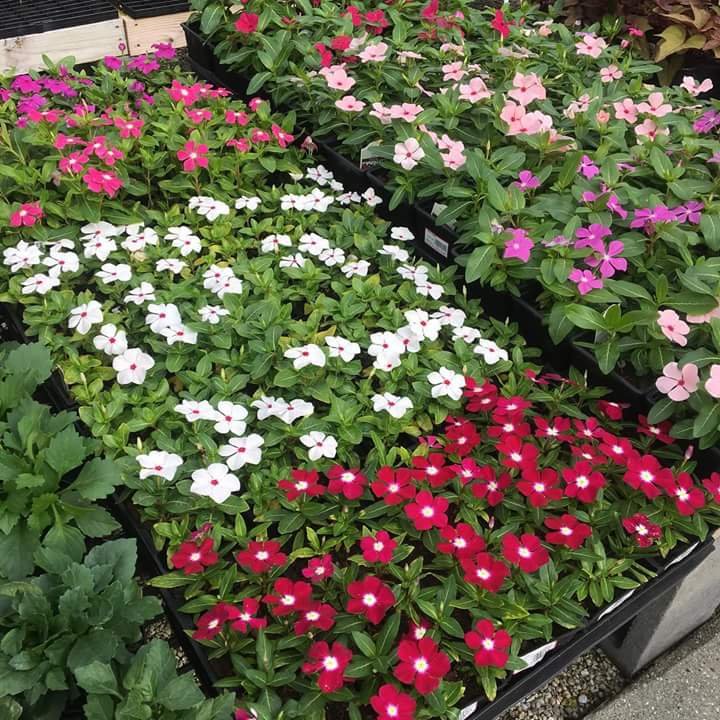 Ornamental varieties have been developed whose flowers are more colorful.Sadabahar, periwinkle or vinca rosea is an evergreen shrub that is commonly grown worldwide both as an ornamental plant and for medicinal purposes. The vinca rosea plant grows to about 3 feet in height having smooth, glossy, dark green leaves, and flowers throughout the year.The medicinal variety has white flowers and the pink flowers have a dark pink eye in the center.
Ornamental varieties have been developed whose flowers are more colorful.Sadabahar, periwinkle or vinca rosea is an evergreen shrub that is commonly grown worldwide both as an ornamental plant and for medicinal purposes. The vinca rosea plant grows to about 3 feet in height having smooth, glossy, dark green leaves, and flowers throughout the year.The medicinal variety has white flowers and the pink flowers have a dark pink eye in the center.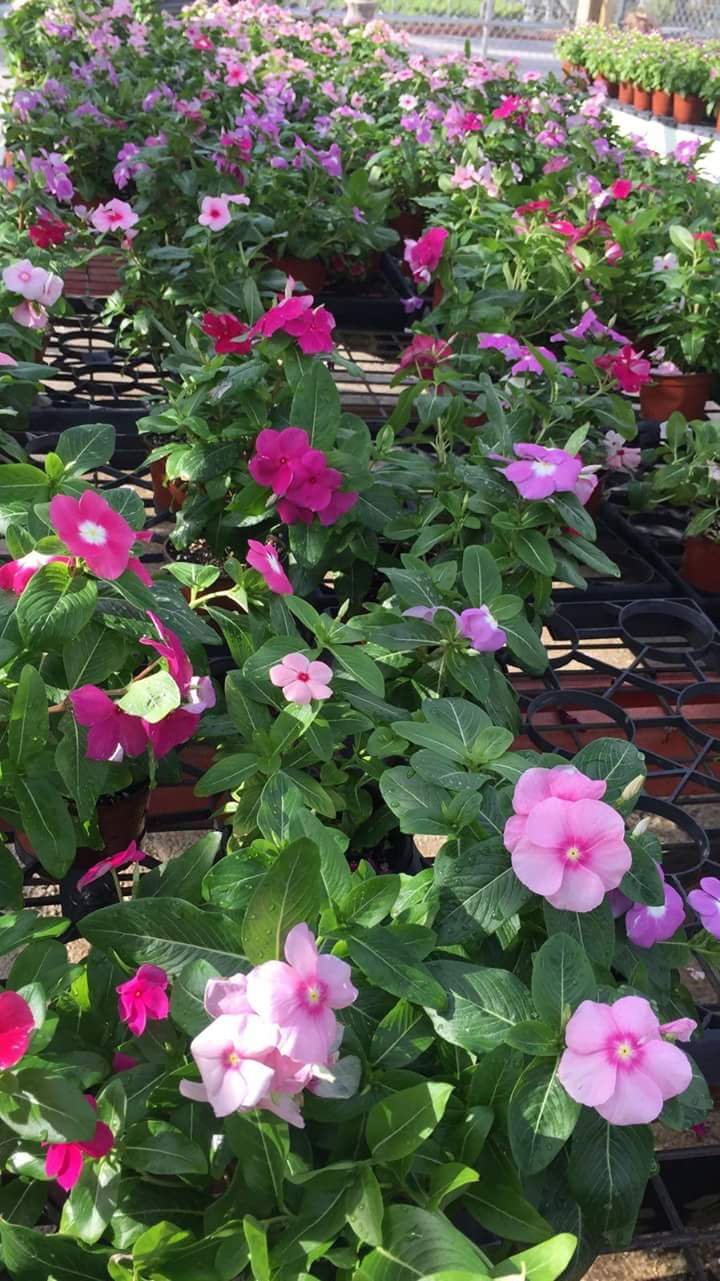 This is Greater periwinkle, or Vinca major to science, a trailing, evergreen, perennial herb of waste places, rubbish tips, roadside verges, shaded banks and woodland. And gardens of course…
This is Greater periwinkle, or Vinca major to science, a trailing, evergreen, perennial herb of waste places, rubbish tips, roadside verges, shaded banks and woodland. And gardens of course…
It’s a neophyte (introduced to these isles after 1500, but only just) and has larger parts than its close relative Vinca minor which I wrongly thought of as ‘native’ (it is in fact an archaeophyte, i.e. introduced between the formation of the Channel and 1500). Both are long established further south in Europe and around the Med.
Periwinkles are members of the Apocynaceae or Milkweed family, which is largely tropical in its distribution. These temperate outliers have the family’s characteristic flower shape - propellor-like - and these are produced from early spring (the photo is recent) through to the autumn, which is no doubt of value to pollinators.
Greater periwinkle contains the alkaloid vincamine, which is used by the pharmaceutical industry as a cerebral stimulant and vasodilator. It also contains reserpine, which reduces high blood pressure. PFAF list other attributes too and it would be fascinating to know how these qualities affect plant and soil biota chemistry.
As it seems to be on the rise in the British isles, unsurprisingly given its rampant growth (it’s a regular garden discard) and climate change, we can see gains that might counter any perceived drawbacks (e.g. phytochemical yield, pollinator benefit). It’s possible, too, that it’s merely returning after the last ice age.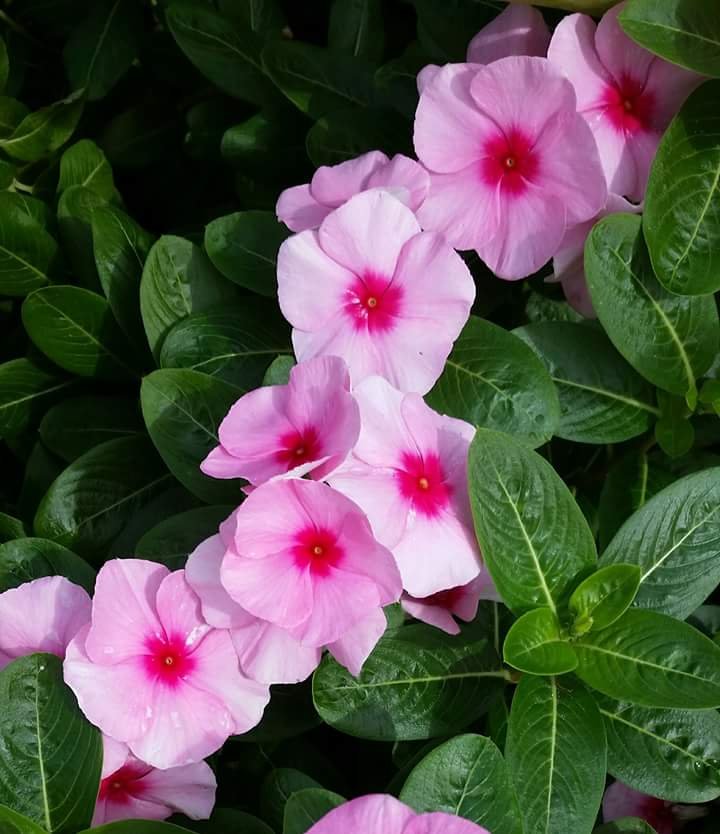
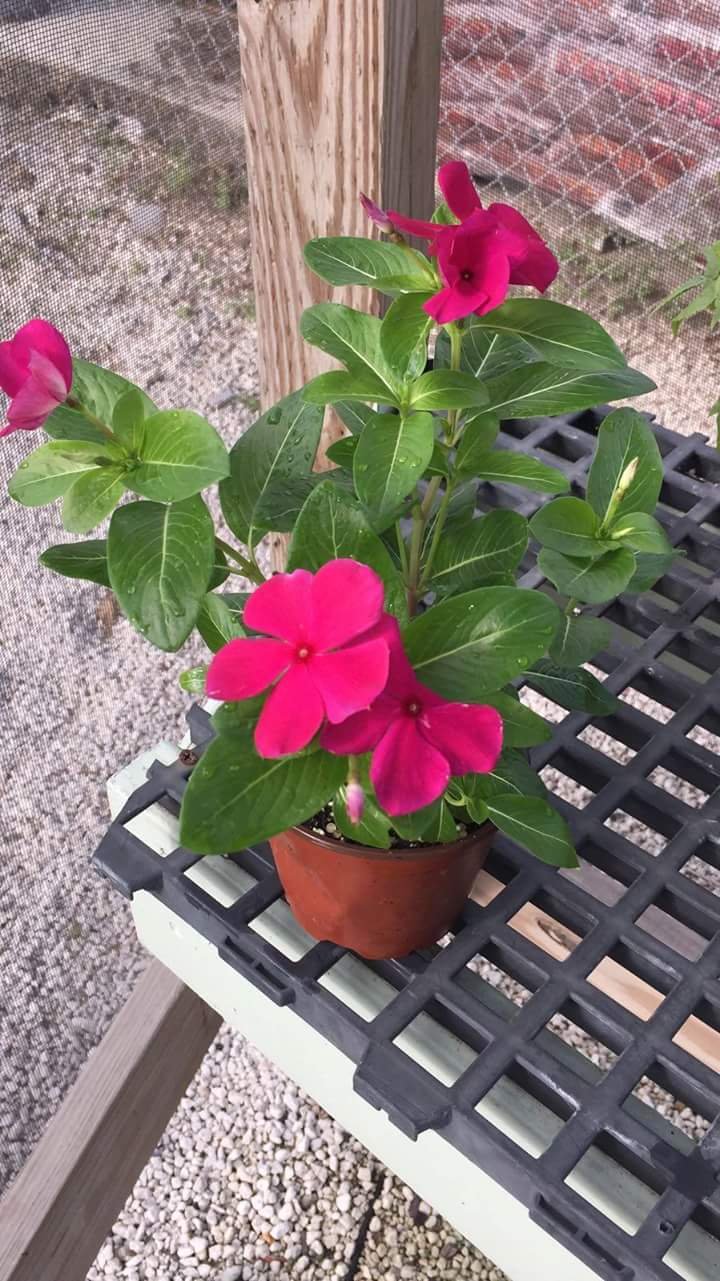 Growing Annual Periwinkle
Growing Annual Periwinkle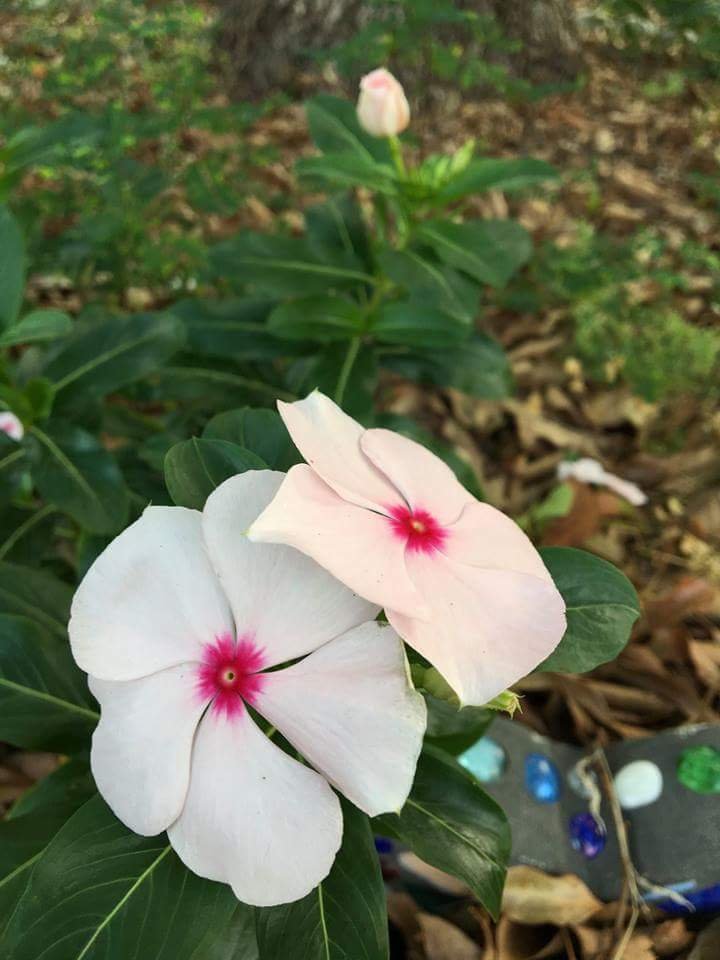 thanks to sharing for your wonderfull post..very well done.. my dear friend. @ctrl-alt-nwo
thanks to sharing for your wonderfull post..very well done.. my dear friend. @ctrl-alt-nwo
Annual periwinkles love the sun and tolerate only very light shade before flowering is affected. Use them for bedding in flower beds, in outdoor containers, or as houseplants for sunny windows. When bedding out, space them 8 to 10 inches apart. They are not particular about soil, and in fact do well in poor soil with low fertilization. Watering is necessary only if plants start to droop. When used in containers, they do best in terra cotta pots which allow for good drainage and air flow; be especially careful not to overwater if grown in plastic pots. They are pest-free if not overwatered. The plants are self-cleaning, so you do not have to dead-head spent flowers, but plants can be pinched back to encourage bushiness if they get too large.
The plants are grown for its attractive glossy, green foliage, as well as its flowers. Flowers bloom all summer, and up to frost. Common colors include white, rose, pink, and red. Vinca is commonly used for borders, edging, and ground cover or bedding plants.
Vinca plants are subshrubs or herbaceous, and have slender trailing stems 1–2 m (3.3–6.6 ft) long but not growing more than 20–70 cm (8–27.5 in) above ground; the stems frequently take root where they touch the ground, enabling the plant to spread widely. The leaves are opposite, simple broad lanceolate to ovate, 1–9 cm (0.5–3.5 in) long and 0.5–6 cm (0.20–2.36 in) broad; they are evergreen in four species, but deciduous in the herbaceous V. herbacea, which dies back to the root system in winter.
Vinca beautiful plant
Medicinal Applications:
Over the years, Vinca has been used for medicinal purposes. Applications included:
Lowering blood pressure
Lowering sugar levels for diabetics
Treatment for coughs, colds, sore throats
Treating eye and lung infections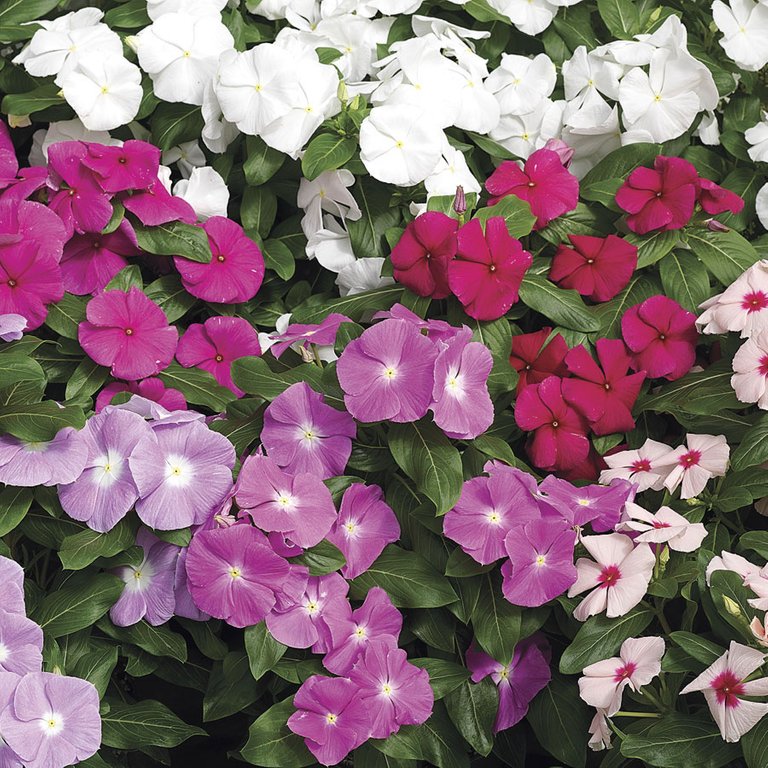

Plant Propagation:
Vinca or Periwinkle are grown from seeds. Sow Vinca seeds outdoors after all danger of frost. Many people will broadcast spread them across an area. These prolific, self seeders, will usually reseed themselves, if left unattended.
You can also start them indoors 10 to 12 weeks before the last frost in your area.
Some varieties can also be propagated by rooting cuttings.

source all
This delicate and beautiful flower is often found in purple and purple tones, but there are also white varieties. Each flower it has is formed in five pieces.
The season of flower bloom lasts almost all year, keep these leaves in summer and winter. Vinca flower grows healthier and beautiful in temperate places like most other flowers.
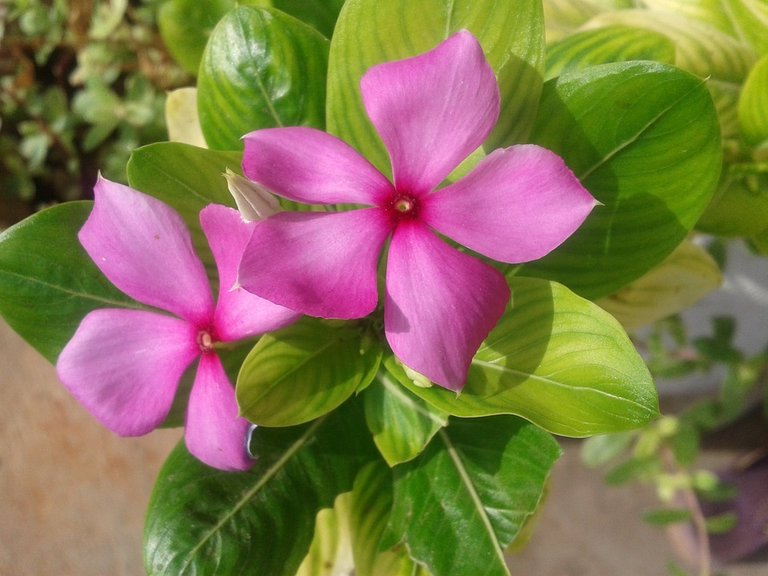
They love the sunshine, but it is not a condition for the development of this plant. He loves to live in content rich soil.
It is quite easy to get a new one from a flower because the Algerian brothel is very easy to root and will continue to develop. This beautiful and unique flower is also able to prevent the danger of landslides that may come into play in the case of being planted in sloping areas due to the spreading to the whole land at the same time.

How should Vinca Flower Care be done?
The maintenance of this flower which is able to maintain its existence for many years and is durable does not need much trouble either. This flower, which is durable, durable, maintenance-friendly and reproducible afterwards, is usually found on the edges of the garden, in parks and under trees.

The leaves and flowers that they open provide a pretty nice image with summer and winter protections. In cold weather and in places with shadows, the plant that can grow requires no special care, but it can continue to maintain its own existence even if there is almost no maintenance.
The flower that can produce the new flowers in its own place in the root attack area can produce itself and spread easily in wide area. Thanks to the extended roots, there is no need to make extra effort for the care and reprocessing of the flower which can open new flowers.
The most productive periods for making the uremia are determined as March.

Magoo-2 found a series of multi accounts of a same owner is following your articles to cheat your generous rewards.
Magoo-2 found these accounts are suspicious & can be multi accounts of a single owner. Conclusion is based on last 30 days transactions:
@justdothat @harunbaki @justshowme @gifhy @lessismoring
magoo-2
Check our latest multi comment spam update report